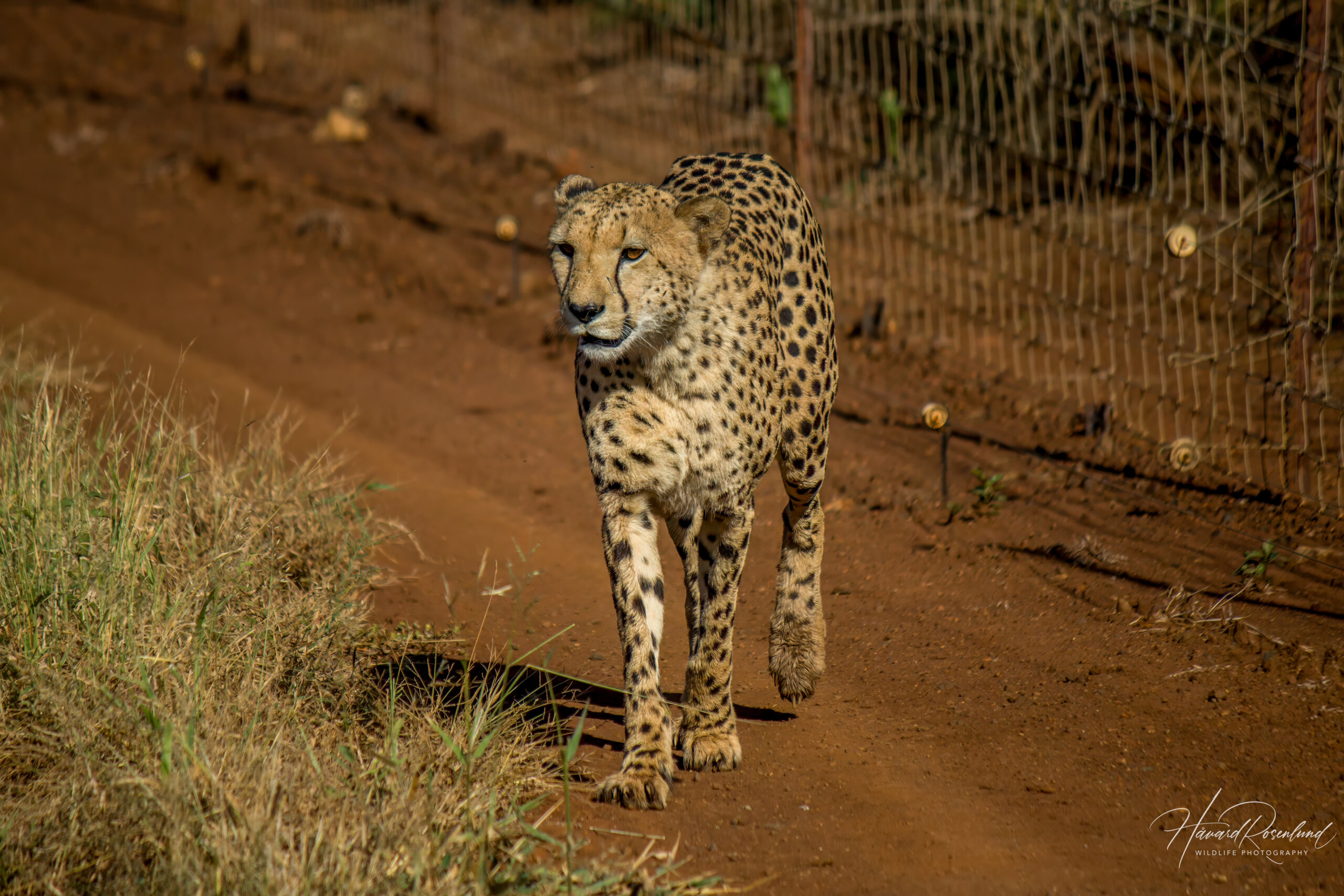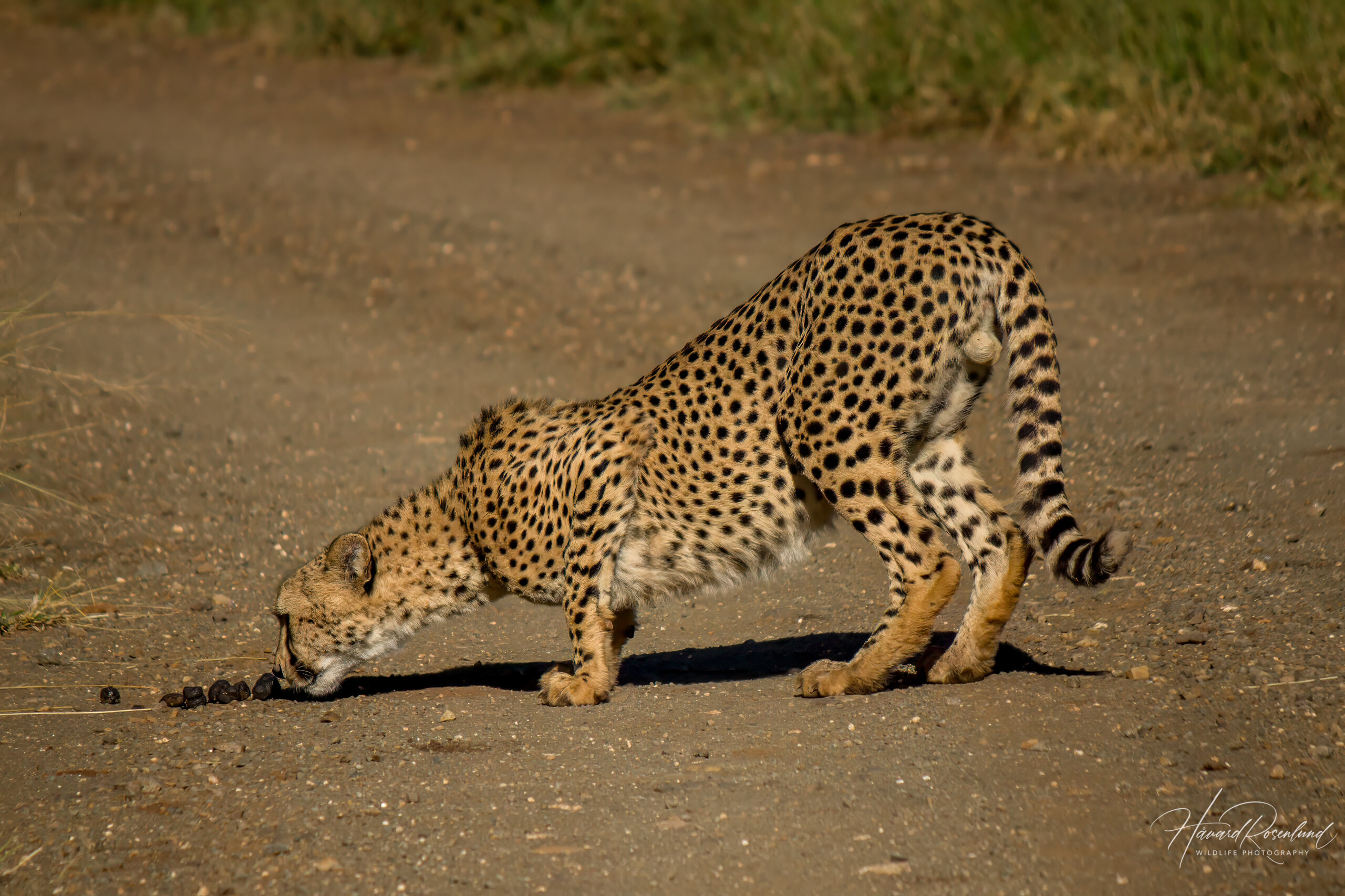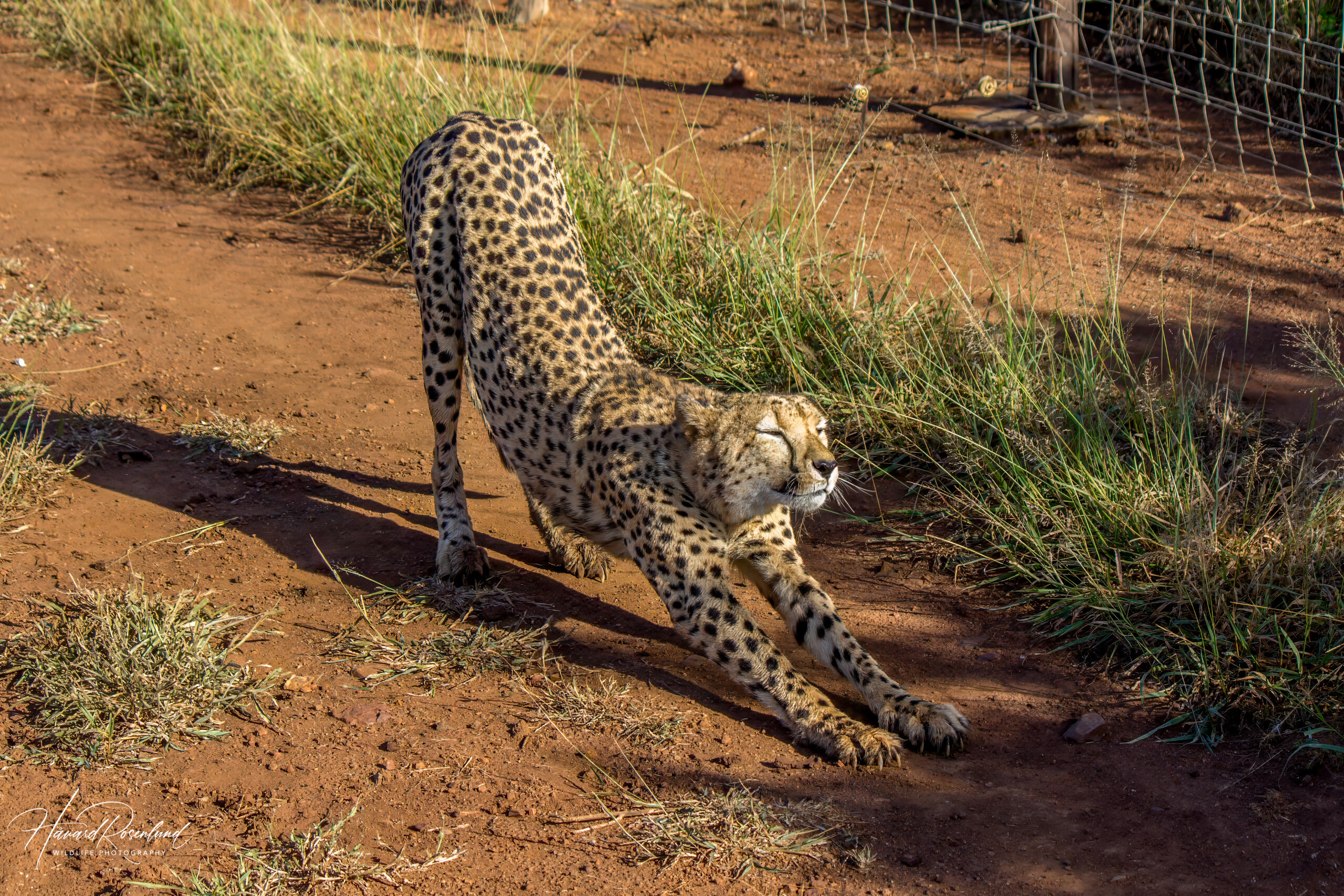Description
The cheetah (Acinonyx jubatus) is a large species of cat and is often considered the smallest of the big cats. It is actually not closely related to other big cats, such as leopard and lion, and is more related to the smaller cat species. It is perhaps most famous for being the world’s fastest land animal, reaching speeds up to 112-120 km/h (70-75 mph). It can accelerate from 0-100 km/h (0-62 mph) in only three seconds, rivaling many high-performance cars. It is more of a sprinter than a long-distance runner as it can only keep up top speed for about 500 (1,600 ft) meters.
It is the only big cat with semi-retractable claws, meaning the claws are always out to some degree, whereas most other cats can sheath the claws completely to protect them from wear and tear. Always having the claws out is an adaptation for running, as it gives the cheetah improved grip, balance and agility when hunting at high speeds.
Cheetahs get 66-94 cm (26-37 in) tall at the shoulder and can weigh up to 72 kg (159 lb). Males are only slightly larger than females and have bigger heads. Though sometimes confused with the leopard, its appearance is very different. The cheetah is a lot leaner, with a wide chest and a narrow waist, as well as longer legs. Cheetahs have solid spots covering their body, whereas leopards have rosettes, or small circles. Another telltale feature of the cheetah is the black tear-line running down from their eyes. This line is there to absorb sunlight as the cheetah hunts mainly during daytime hours, compared to most other cats that prefer hunting at night. Notice the tear-line on the male cheetah in this video:
Social behavior
Adult cheetahs are often solitary animals, though groups of males, especially brothers, are quite common. Young siblings will form a coalition for up to 2 years when left to fend for themselves by the mother. Any females will then leave the group, while brothers will stay together for life. Young lonely males are also known to often team up with other unrelated males, while females remain solitary except when raising cubs. Cheetahs cannot roar like the big cats of the Panthera genus, and a cheetah call sounds more like loud squeaks. It is a call you often hear between mother and cubs, but adult siblings will also make this call to find each other when separated. The cheetah can also purr like a domestic cat, whereas most other big cats cannot, revealing their kinship to the smaller cats.
Hunting & feeding habits
Cheetahs often prefer open habitats, like savanna and grassland, where they enjoy relaxing on higher ground looking out for potential prey or threats, and it is not uncommon for them to jump on safari vehicles for this very purpose in some places. Contrary to popular belief, a cheetah does not need these large open areas to hunt, as their main weapon is not speed but their agility. They can therefore also successfully hunt in denser forests. They can do sharp turns in either direction using their athletic build, semi-retractable claws, and the tail which acts as a rudder. Another myth is that cheetahs abandon hunts because of overheating. This is not true, and it is found that their body heat is only elevated noticeably after doing a kill. This is thought to happen because of the stress inflicted by possibly having to deal with larger predators coming to steal it from them.
Cheetahs hunt smaller prey than the larger cats, with prey averaging 40 kg (88 lb). Common prey species are Thomson’s gazelle and Grant’s gazelle in East Africa, springbok in southern Africa, and impala wherever they occur. Young of larger species are also taken. Adult wildebeest and zebra can be taken down when hunted in groups. Cheetahs rely on sight when hunting and need daylight to succeed. They will often hunt in the early morning or evening to avoid the hottest hours of the day. They commonly stalk their prey to within 10-30 m (33-98 ft) before giving chase. They will then try to trip the prey before grabbing the throat to suffocate it. A cheetah will eat its kill as fast as possible to make sure it gets its share before any larger carnivores come and steal it.
Here’s a video of two cheetah brothers on the move after being chased off a kill by lions in Thanda Private Game Reserve. Notice how full their bellies are.
Reproduction
Males reach sexual maturity after one year but will seldom mate before they are three years of age. For females it takes about two years until they reach sexual maturity. There is no breeding season, and mating can happen throughout the year. After a gestation period of 90-98 days a female can give birth to up to nine cubs. The cubs are born with a characteristic lighter and furrier coat spanning from their head and down their back. Some speculate that this is an adaptation to make them look like a honey badger, a highly aggressive, but small carnivore known to not even back down when faced against lions. The cubs stay with their mother for 13-20 months, at which time she will leave them to fend for themselves.
Relationship to humans
Cheetahs were tamed by the ancient Egyptians for hunting practices and status symbols. This practice was further introduced in Persia and eventually India, where it was common until recent times. The cheetah was often owned by princes and kings. Genghis Khan is known to have had cheetahs as pets. The ruler of the Mughal Empire, Akbar the Great, is believed to have had as many as 1,000 cheetahs at his disposal.
Status
The cheetah used to be common throughout Africa, the Middle East and into India. It is believed to be around 6,500 cheetahs left in the wild today, and the species is listed as vulnerable on the IUCN Red List. There are four recognized subspecies of cheetah, three in Africa and one in Asia. Most cheetahs survive in Africa, and the most numerous subspecies is the Southeast African cheetah (A. j. jubatus), found in East Africa and Southern Africa. The other two African subspecies are the Northeast African cheetah, or Sudan cheetah (A. j. soemmeringii), numbering almost 1,000 individuals, and the Northwest African cheetah, or Saharan cheetah (A. j. hecki) with probably less than 500 mature individuals left.
The Asiatic cheetah (A. j. venaticus) is the most endangered subspecies, with less than 100 individuals currently surviving in protected areas of Iran. This population is too vulnerable for any individuals to be relocated to other parts of Asia, such as India, which has been proposed as a potential effort to help save the subspecies. As the Asiatic subspecies has to stay put for its own protection, a small number of African cheetahs from Namibia were introduced to Kuno National Park in India at the end of 2022. This has brought the species back to a country where it once was common but was gone for 75 years after the last cheetahs were shot in 1948.
Threats
In the early days, especially in Asia, cheetahs were caught in the wild and trained to become hunting animals for rulers and leaders. This had a detrimental effect on the Asiatic populations. In more recent times, the cheetah was hunted for its coat, further decreasing its numbers drastically. This is not as common today, but habitat reduction and fragmentation pose major threats for the remaining wild cheetahs.
The cheetah is also extremely vulnerable to changes in the environment and diseases, as it has an incredibly low genetic variation within its entire wild population. This means the species must have gone through a bottleneck sometime in recent history. A bottleneck is when a species is reduced to so few individuals that specimens are often forced to mate with close relatives, leading to very low variability in the genetic material. Such species are often very sensitive to change, and diseases can have detrimental effects.




















